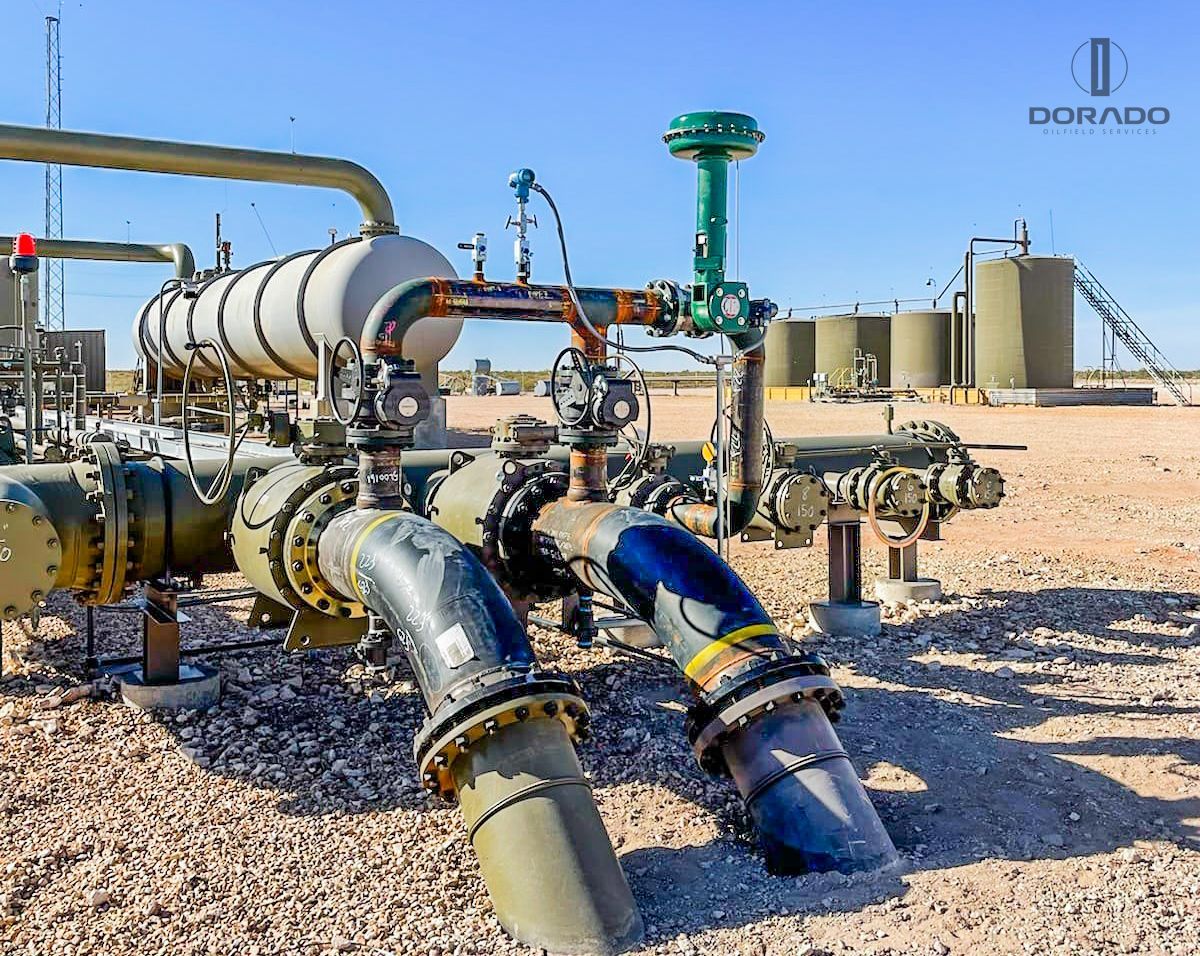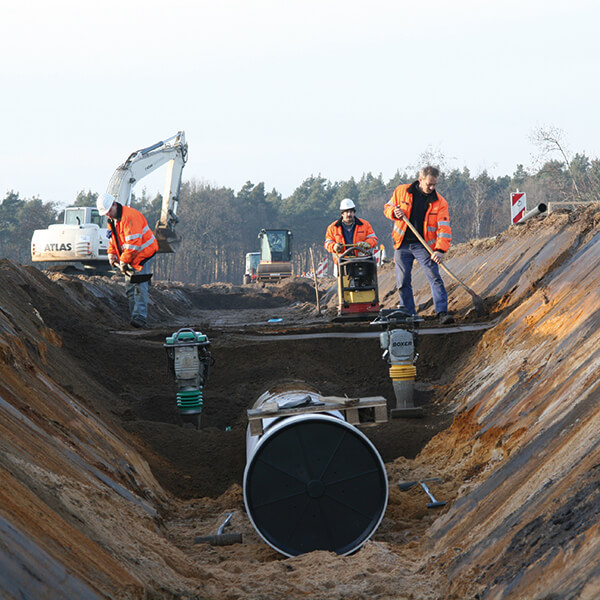Cost Analysis Guide for Pipeline Construction Services Projects
Wiki Article
Exploring the current Advancements in Pipeline Construction Solutions for Modern Projects
The Pipeline Construction industry is going through considerable modifications. Developments such as smart materials and robotics are improving typical techniques. These innovations assure to enhance efficiency and security. Additionally, AI technologies are boosting task administration capabilities. As these components merge, they elevate concerns concerning their long-lasting influence on sustainability and cost. Understanding these developments is important for stakeholders looking to browse this developing landscape. What effects do they hold for future jobs?The Surge of Smart Materials in Pipeline Construction
As the demand for a lot more efficient and sustainable Pipeline systems raises, the combination of smart materials has actually become a transformative option in Pipeline Construction. These advanced materials have special homes that boost the performance and long life of pipelines. Self-healing polymers can immediately repair minor leaks, significantly lowering upkeep prices and downtime. Additionally, materials installed with sensing units can monitor structural honesty and ecological problems, enabling real-time data collection and analysis.Furthermore, smart products are corrosion-resistant and frequently light-weight, which not only simplifies installation yet also extends the lifespan of the systems. Their flexibility enables pipelines to withstand extreme environmental conditions, promoting safety and security and integrity. As markets increasingly focus on sustainability, using green smart products adds to minimized ecological influence. Generally, the surge of smart materials notes a remarkable shift in Pipeline Construction, leading the way for cutting-edge remedies to fulfill modern framework demands.
Innovations in Robotics for Installation and Maintenance
The combination of smart products in Pipeline Construction is enhanced by innovations in robotics, which are changing setup and upkeep processes. Robotic innovations, such as automated welding systems and drones, improve efficiency and precision, minimizing human error and minimizing safety and security risks. These robots can run in difficult settings, guaranteeing that installments are performed in remote or harmful locations without placing workers in jeopardy.Moreover, robotic evaluation devices furnished with sophisticated sensors supply real-time information on Pipeline integrity, permitting for positive maintenance. They can identify leaks or architectural weak points, making it possible for timely treatments that expand the lifespan of Pipeline systems. Making use of robotics not just accelerates the Construction timeline but likewise optimizes source allotment, bring about set you back savings. As these innovations continue to develop, they are readied to play an important role in forming the future of Pipeline Construction, ensuring reliability and sustainability in facilities growth.
AI-Driven Job Administration Tools Changing Workflow
AI-driven task management devices are improving process in Pipeline Construction by boosting decision-making procedures via enhanced accessibility to real-time information analytics. These devices allow teams to respond swiftly to task growths, thereby boosting performance. Structured communication networks foster collaboration amongst stakeholders, additionally enhancing task end results.Improved Decision-Making Procedures

Real-Time Data Analytics
Using real-time information analytics, modern task administration devices revolutionize process in Pipeline Construction. These innovative tools leverage synthetic intelligence to offer instantaneous understandings right into job efficiency, resource allotment, and potential threats. By continuously keeping an eye on crucial efficiency indicators, teams can promptly adapt to changing conditions, optimizing labor and products usage. The integration of real-time information permits even more informed decision-making, reducing delays and lessening expenses. On top of that, anticipating analytics can identify trends and forecast difficulties before they escalate, enhancing total task performance. As an outcome, Pipeline Construction business that embrace these AI-driven tools can improve project timelines and end results, guaranteeing they continue to be affordable in an increasingly intricate sector landscape. This innovation notes a significant change toward data-centric management techniques.Streamlined Interaction Channels
Efficient interaction is extremely important in Pipeline Construction, where countless stakeholders must work together perfectly to assure job success. The intro of AI-driven task administration devices has actually changed interaction channels within the sector. These devices facilitate real-time details sharing, enabling groups to gain access to updates, share records, and track development efficiently. By automating regular jobs and providing a central system for interaction, these technologies get rid of misconceptions and lower hold-ups. Enhanced exposure right into project timelines and source allowance fosters responsibility amongst staff member. In addition, AI analytics can determine prospective interaction gaps, making sure positive problem-solving. Eventually, structured communication channels not only enhance operations but additionally boost total project efficiency, making it possible for Pipeline Construction firms to satisfy modern-day needs successfully.Enhanced Security Procedures Via Technology Combination
The combination of modern technology in Pipeline Construction has resulted in boosted safety and security protocols. Real-time tracking systems, wearable safety gadgets, and automated danger analyses are currently vital parts in minimizing dangers on job sites. These developments not only enhance worker security however likewise enhance conformity with industry regulations.Real-Time Monitoring Systems
Exactly how can real-time tracking systems transform Pipeline Construction safety and security protocols? By integrating advanced technology, these systems give continuous surveillance of Construction tasks, ensuring instant detection of potential threats. Sensing units and video cameras can check ecological conditions, tools efficiency, and labor force motions, delivering crucial information in actual time. This positive method click here for more info allows task supervisors to determine risks prior to they escalate, considerably enhancing precaution on-site. Furthermore, real-time monitoring facilitates conformity with regulatory requirements, guaranteeing that safety requirements are met constantly. The ability to assess information instantaneously supports educated decision-making, allowing prompt interventions. Consequently, Pipeline Construction tasks can run more successfully while protecting the well-being of employees and lessening crashes, consequently transforming the sector's safety landscape.Wearable Security Gadgets
Frequently, wearable security gadgets are being incorporated right into Pipeline Construction to boost security procedures. These cutting-edge tools, including clever helmets, vests, and wristbands, are made to monitor worker wellness and ecological conditions in real-time. Outfitted with sensing units, these tools can identify hazards such as hazardous gas exposure, extreme warmth, or high noise levels, offering instant signals to managers and employees. In addition, wearable technology commonly consists of general practitioner tracking attributes, permitting effective place tracking of workers on-site. This ability not only aids in quick action during emergencies however likewise boosts total job administration. By focusing on worker safety through modern technology assimilation, Pipeline Construction companies are making significant strides in minimizing crashes and promoting a society of safety and security within the market.
Automated Threat Assessments
While standard threat analyses often count on hands-on analyses, the assimilation of computerized danger evaluation innovations is changing security protocols in Pipeline Construction. These sophisticated systems utilize information analytics, artificial knowledge, and artificial intelligence to determine potential hazards much more precisely and efficiently. By continually monitoring environmental problems, devices condition, and worker actions, automated analyses supply real-time understandings that enhance decision-making. This aggressive approach reduces the probability of crashes and improves conformity with security policies. In addition, automated danger assessments can be updated instantaneously, making sure that all stakeholders have access to the current details. Consequently, Pipeline Construction tasks benefit from a safer workplace, decreasing disturbances and promoting a society of safety via technology combination.Sustainable Practices in Pipeline Construction
As the demand for power infrastructure climbs, the Pipeline Construction market significantly focuses on lasting techniques that decrease ecological effect. Business are embracing environment-friendly materials and sophisticated Construction methods to lower their carbon footprint. The use of trenchless technology enables for Pipeline installment with minimal disturbance to the surrounding setting, maintaining natural environments and decreasing soil disintegration.
Protecting Furthermore, the execution of renewable resource resources, such as solar or wind, to power Construction tasks is getting traction. This shift not only lowers reliance on fossil gas yet additionally improves the overall sustainability of Pipeline projects. Moreover, effective waste administration techniques, including reusing and recycling materials, are coming to be requirement in the market.
Real-Time Surveillance and Predictive Maintenance Solutions
The change in the direction of lasting techniques in Pipeline Construction has actually led the way for the integration of real-time monitoring and predictive maintenance services. These technologies leverage progressed sensing units and data analytics to continually assess Pipeline stability and functional effectiveness. By collecting data in actual time, operators can identify anomalies such as leakages or stress declines prior to they intensify into major issues. This proactive method not just reduces ecological threats however additionally minimizes downtime and maintenance costs.Anticipating maintenance utilizes algorithms to anticipate prospective failings based on historic information and existing performance metrics. This allows timely interventions, enhancing maintenance timetables and resource allocation. In general, real-time tracking and anticipating maintenance solutions represent a considerable development in Pipeline Construction, enhancing safety and integrity while supporting sustainability objectives. As markets remain to accept these innovations, the operational landscape of Pipeline management is readied to advance significantly, guaranteeing long-term stability and effectiveness.
The Duty of Drones in Evaluating and Assessment
Drones have arised as Learn More Here transformative tools in the evaluating and evaluation of pipelines, offering improved performance and accuracy. Their capacity to catch high-resolution photos and videos from different angles permits comprehensive analyses of Pipeline integrity without running the risk of human security. Furnished with sophisticated sensing units and thermal imaging capabilities, drones can find leaks, rust, and architectural abnormalities that might not show up to the naked eye.The implementation of drones considerably lowers inspection time, making it possible for quicker decision-making for maintenance and repair work. This effectiveness equates to cost financial savings and minimal interruption to bordering atmospheres. Drones can also access hard-to-reach locations, such as tough terrains or elevated frameworks, even more increasing the extent of inspections.
As the Pipeline market remains to welcome technical innovations, the assimilation of drones right into evaluating and inspection procedures is expected to read here grow, setting brand-new criteria for operational quality and safety and security in Pipeline Construction solutions.
Often Asked Concerns
What Are the Costs Related To Modern Pipeline Construction Innovations?
The expenses related to contemporary Pipeline Construction developments typically include advanced products, specialized labor, and sophisticated modern technology. These aspects contribute to higher first financial investment, but can lead to long-lasting savings via enhanced effectiveness and minimized maintenance demands.Exactly How Do Governing Changes Impact Pipeline Construction Technologies?
Governing modifications substantially influence Pipeline Construction technologies by necessitating the fostering of safer, extra reliable approaches. Conformity requirements often drive innovation, leading to improvements in materials, layout, and Construction techniques that boost overall task sustainability and safety.What Abilities Are Needed for Occupations in Advanced Pipeline Construction?

Jobs in advanced Pipeline Construction call for competence in design concepts, task monitoring, safety procedures, and environmental regulations. Additionally, skills in innovation assimilation, teamwork, and problem-solving are crucial for going across the intricacies of modern-day infrastructure jobs.
Just How Can Firms Guarantee Compliance With Environmental Requirements?
To assure conformity with ecological criteria, business need to apply strenuous training programs, perform normal audits, and embrace finest methods in sustainability. Involving with stakeholders and keeping track of regulative modifications additionally reinforces their dedication to ecological stewardship.
What Are the Trick Challenges Dealing With Pipeline Construction Today?
The key challenges facing Pipeline Construction today include regulatory compliance, environmental worries, rising and fall product expenses, labor lacks, and the need for sophisticated innovation combination (Pipeline Construction Services). These aspects make complex job timelines and overall efficiency in the marketAs the demand for more sustainable and efficient Pipeline systems enhances, the assimilation of clever products has actually emerged as a transformative solution in Pipeline Construction. AI-driven task management tools are improving process in Pipeline Construction by enhancing decision-making processes through improved accessibility to real-time data analytics. While project administration in Pipeline Construction has traditionally counted on hands-on procedures, the integration of sophisticated tools substantially enhances decision-making capacities. Taking advantage of real-time data analytics, modern-day job monitoring tools change process in Pipeline Construction. Professions in innovative Pipeline Construction call for knowledge in design principles, task administration, safety procedures, and ecological policies.
Report this wiki page